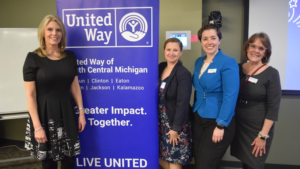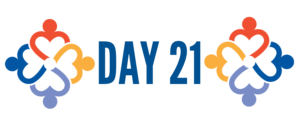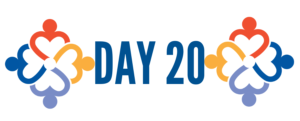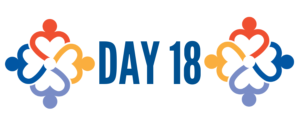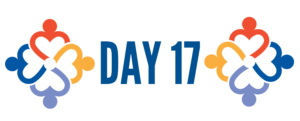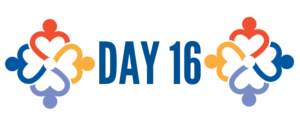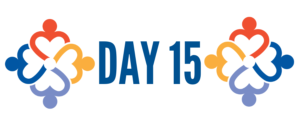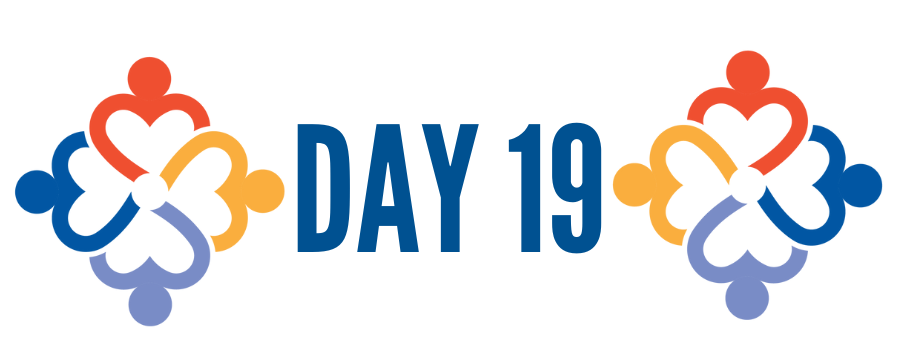
Day 19: Workplace Considerations
Over the past three weeks, you’ve learned how discrimination impacts income, housing, healthcare, education, and other factors that make a huge difference in our lives. Employment, access to a thriving wage, and wealth-building are critical for leveling the playing field.
There are social, ethical, and moral reasons to engage in justice work. And, while it should not be the only reason, it can be helpful to understand how diversity, equity, and inclusion initiatives can provide economic benefits to companies. Consider that the latest Diversity wins report highlights the following:
- An analysis of 2019 data shows that companies in the top 25% for gender diversity within executive teams were 25% more likely than companies in the bottom 25% to have above-average profitability.
- Companies in the top 25% for ethnic and cultural diversity were 36% more profitable than those in the bottom 25%.
- In difficult times, when leaders might be most likely to de-prioritize DEI initiatives, there are still considerable financial benefits to integrating DEI.
- There are five primary ways that businesses benefit from investing in DEI initiatives: Winning top talent; improving the quality of decision making; increasing customer insight and innovation; driving employee motivation and satisfaction; and improving a company’s global image and license to operate.
McKinsey and Company outlines four main factors that increase employee’s inclusion:
- Diverse, inclusive leadership
- Meritocracy and initiatives to increase fairness in performance evaluations
- Sponsorship (colleagues going above and beyond to create professional advancement opportunities for others)
- Substantive access to senior leaders
How does your company or organization stack up? What will you do to be part of the conversation and action?
Today’s Challenge
Read:
10 Ways to Start a Conversation About Race by Read Race Forward [2 min read] One of the best ways to continue to build empathy and learn about race is to start a conversation. Learn how and start talking with friends, family, school, and work colleagues.
These companies are successfully scaling up Diversity, Equity and Inclusion (DEI) initiatives across the globe by World Economic Forum (Jan 2024) [10 min read] Extensive research underscores the long-term benefits of inclusive policy-making, business strategies and sustained diversity programs in the private and public sectors. Embracing DEI is not just a moral imperative, but also a strategic one that promotes sustainable growth and builds agile and flexible organizations capable of weathering global risks and challenges.
Watch:
How to get serious about diversity and inclusion in the workplace (Jul 2018) [11 min watch] Imagine a workplace where people of all colors and races are able to climb every rung of the corporate ladder — and where the lessons we learn about diversity at work actually transform the things we do, think and say outside the office. How do we get there? In this candid talk, inclusion advocate Janet Stovall shares a three-part action plan for creating workplaces where people feel safe and expected to be their unassimilated, authentic selves.
The Power of Asset Framing: A Conversation with Trabian Shorters [5 min watch and 10 min read] Learn more about how the Skillman Foundation is using asset framing in their work with Detroit Children, and watch videos from Trabian Shorters, founder and CEO of BMe Community, discuss how to put asset framing into practice.
Discuss:
- What information do you still need in order to be a better advocate for oppressed communities? How might you work to gain that information?
- Who do you have influence with? Consider co-workers, community/business partners, and others with whom you have a relationship. How can you start a conversation about imbedding diversity, equity, and inclusion?
- What is 1 short-term and 1 long-term goal that you have for your workplace? Map out the first 3 steps you need to take to move those projects forward.

